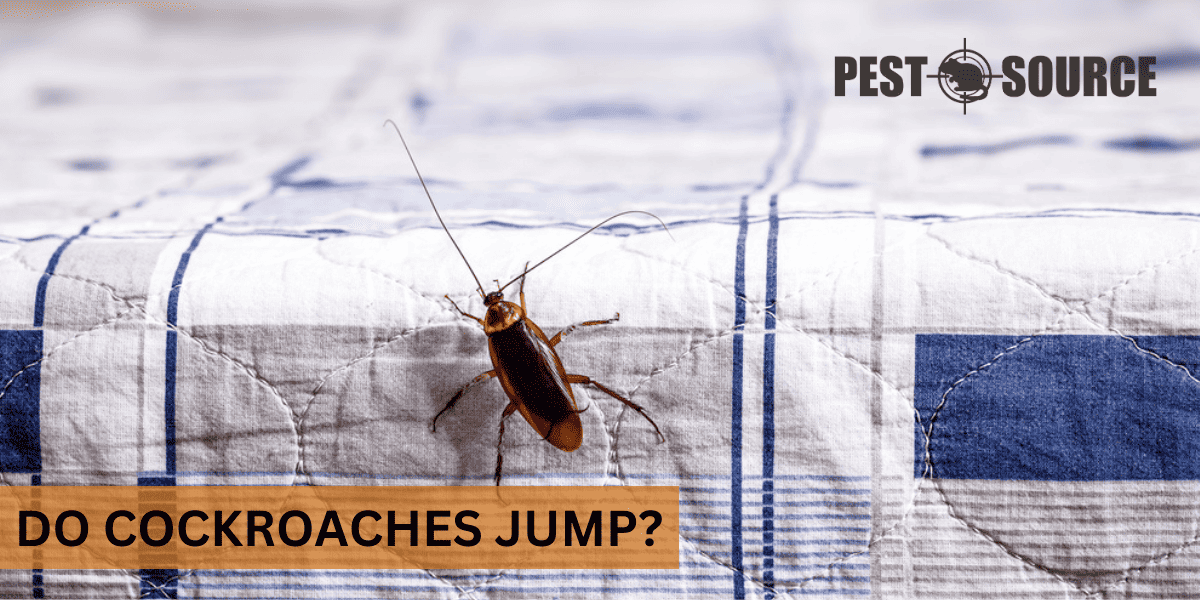Cockroaches generally do not jump. They are primarily known for their fast crawling and, in some species, their ability to fly short distances. Understanding their movement patterns is key in effectively managing and preventing infestations. This article explores common misconceptions about cockroach behavior and provides factual insights into their actual capabilities.
POINTS
- Cockroaches are not anatomically built for jumping, as their leg structure and muscle arrangement are designed primarily for running, with the exception of the rare “leaproach” (Saltoblattella montistabularis).
- Most cockroach species, including common ones found in homes, do not jump, and the perception of them jumping is often due to their rapid running speed.
- Some cockroaches have the ability to fly or glide, like the American cockroach, which uses its wings to glide from higher to lower surfaces, especially in warmer climates.
- Regional variations in cockroach behavior exist, such as flying cockroaches in New Jersey, but true jumping behavior is extremely uncommon among cockroach species.
- Myths about cockroaches’ movement capabilities, such as jumping like crickets or flipping over, are debunked; scientific evidence shows that these insects primarily run or crawl, with some species capable of short flights or glides.
Can Roaches Jump?
One common question that arises when discussing cockroaches is whether these persistent pests have the ability to jump. Unlike crickets and grasshoppers, which are known for their impressive leaping abilities, cockroaches are not typically recognized for this type of movement. Let’s delve into the physical mechanics behind their movement to understand why.
Physical Mechanics Behind Cockroach Movement
Cockroaches are equipped with six legs, each having a coxa, trochanter, femur, tibia, and tarsus, much like other insects. However, the structure and muscle arrangement of cockroach legs are primarily designed for running. They possess strong and long hind legs that help them scuttle away quickly when they sense danger. This rapid movement often gives the illusion of jumping, but in reality, cockroaches are not anatomically built for jumping like some other insects.
Varieties and Developmental Stages of Cockroaches in Relation to Jumping
While most common cockroach species do not jump, there is an exception. The Saltoblattella montistabularis, discovered in South Africa, is known as the “leaproach” because of its unique ability to leap. This species has longer legs and a modified muscle structure that allows it to jump.

Developmental Stages
When examining the developmental stages of cockroaches, we find that nymphs (young cockroaches) are generally more agile than adults. However, even at this stage, jumping is not a significant part of their movement repertoire. As cockroaches mature, their exoskeletons become heavier and thicker, making it even less likely for them to engage in jumping.
Jumping Versus Other Modes of Movement in Cockroaches
Cockroaches are known for their ability to crawl into the smallest of spaces and for some species, to fly short distances. For example, the American cockroach can use its wings to glide from higher to lower surfaces.
Situational Use of Movements
In terms of evasion tactics, cockroaches are more likely to run or fly away rather than jump. If cornered, they rely on their speed, which can reach up to 3 miles per hour, making them one of the fastest insects relative to their size. This quickness is often enough to evade predators and human attempts to capture them.
Regional Variations and Unusual Jumping Behaviors in Cockroaches
Cockroach species exhibit a variety of behaviors that can differ significantly from one region to another. While jumping is rare in most cockroaches, some species have developed unique adaptations that allow for unusual movement patterns, including jumping or gliding.
Regional Examples of Cockroach Movement
In certain regions, such as New Jersey, residents may encounter flying cockroaches, particularly during the warm months. These are typically American cockroaches that use their wings to glide rather than truly fly. Although startling, this behavior is more of a controlled fall and should not be confused with jumping.
Unusual Behaviors
The “black jumping cockroach” (Panchlora nivea) is another unique species, which is often mistaken for a jumper because of its swift movements. However, its primary mode of transportation is running or flying. True jumping cockroaches are exceedingly rare, with the aforementioned Saltoblattella montistabularis being a notable exception.
Debunking Myths About Cockroach Movement
There are several myths surrounding the movement capabilities of cockroaches. Let’s address these misconceptions and provide scientific clarification.
Cockroaches and Jumping Myths
One common myth is that cockroaches can jump like crickets or flip over obstacles in their path. As previously discussed, cockroaches do not have the leg structure or muscle arrangement for such movements. They are ground-dwelling insects that prefer to run or crawl into protective crevices.
Scientific Clarifications
Another misconception is that all cockroaches can fly. In truth, many species have underdeveloped wings and are incapable of flight. Those that can fly usually do so only for short distances or to glide down from heights. The idea of cockroaches jumping across surfaces is more fiction than fact, with very few species having any ability to leap.
Can Cockroaches Fly?
Many species of cockroaches can fly. Not all cockroaches can fly, but those that do have a pair of wings. Flying is typically used as an escape mechanism rather than a primary mode of travel. They are more adept at running, which is why they are often seen scurrying across floors. Cockroach flight is generally not as controlled or efficient as that of other flying insects, but it serves as a useful tool for quick escapes and spreading to new areas.



